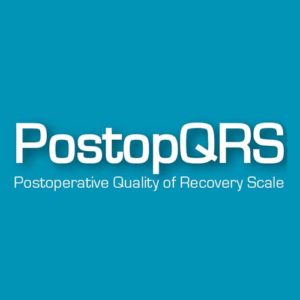The quality of recovery following surgery and anaesthesia is of vital importance to improving patient outcomes and clinical practice. “What happens in the operating room may influence recovery well beyond hospital discharge”. This concept guided the research started in 2007 by the group of international developers.
After comprehensive literature review, a pilot study on 133 patients lead to the refinement of the concepts to be measured by the PostopQRS™ in its domains and items. So, development was in accordance with sector good practices such as FDA guidance. The initial items were further tested in an observational study of 701 patients to assess the PostopQRS™ capacity to evaluate and track recovery and to discriminate between patients. The observational study was conducted in eight countries and in five languages, involving patients of 6 years of age and above undergoing elective surgery with general anaesthesia. Recovery was assessed before surgery and at multiple time periods postoperatively. Recovery was defined as return to baseline values or better.
A number of projects have since been performed to provide additional levels of validation in condition specific surgery such as knee replacement and arthroscopy, tonsillectomy, gastric and cardiac surgery.
Ongoing developments have included further validation studies to identify normal cognitive performance variability, as well as discriminant validation studies to show that the PostopQRS™ is able to:-
1) discriminate change between groups,
2) validation of use of the PostopQRS™ via the telephone,
3) specific adjustments to take account of low cognitive performance prior to surgery.
In addition, there is a wealth of evidence on the measurement properties of the PostopQRS™ captured in over 30 peer reviewed international publications .
See external link listing all the 31 peer reviewed papers under ‘Key References’.
^ Back to top


